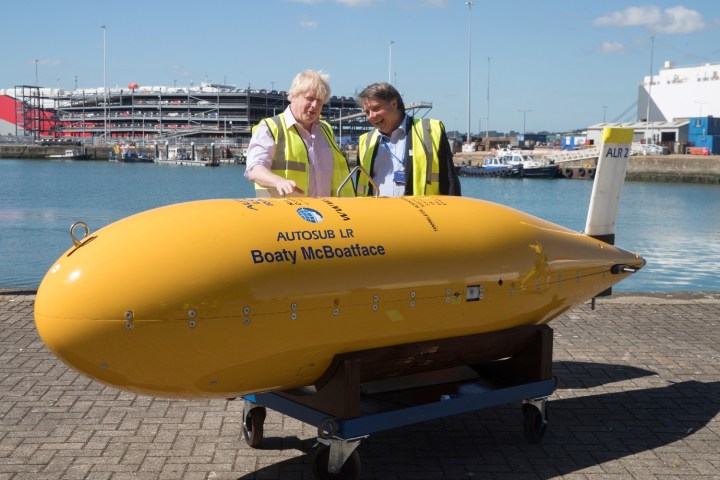
Boaty McBoatface’s Third Voyage sounds more like the closing entry in a Pixar movie trilogy than it does an impressive oceangoing feat set to take place later this year. In fact, it refers to the upcoming third mission for Autosub Long Range, the vessel nicknamed “Boaty McBoatface” as the consolation prize in a British public vote.
The challenging mission will see Boaty explore the ocean cavity beneath Thwaites Glacier in the Amundsen Sea sector of western Antarctica. Set to take place this fall, the mission will examine the effects of warming ocean waters on the glacier. This melting could trigger an unstable retreat of the West Antarctic ice sheet, which may result in sea levels rising by more than two meters. Data gathered by the good ship McBoatface will be used to produce more robust forecasts of future sea level rise.
“As with the previous mission where Autosub Long Range was sent beneath an Antarctic ice shelf, the major challenge is that presented by the presence of the ice shelf itself,” Peter Davis, a physical oceanographer with the British Antarctic Survey, told Digital Trends. “Once Autosub Long Range has entered the ice shelf cavity, there is no ability for it to communicate with the ship, nor is it able to surface to find its location via GPS. Therefore it must accurately navigate for the duration of its mission, ensuring it will exit the cavity and be recovered to the supporting research vessel. Whilst in the cavity it must also think for itself, avoiding any obstacles presented by the seabed and the ice base.”
Adding to Boaty’s headaches is the freezing ocean temperatures, which will severely impact the autonomous vessels’ battery life. As a result, the mission must be precisely planned to ensure that the vehicle retains enough power to complete its scientific objectives, while also being able to navigate and propel itself.
“By sending Autosub Long Range beneath Thwaites Glacier, we are sampling a critical area of the ocean that cannot be reached using traditional observation methods from ocean-based research ships,” Davis continued. “The information it gathers will give a unique picture of the ocean conditions within the ice shelf cavity. Autosub Long Range will measure the temperature and the salinity of the ocean beneath Thwaites Glacier, as well as the current speeds and the amount [of] turbulence in the water. These observations will help us better understand how Thwaites Glacier is responding to the changing climate, as well as what processes are setting the rate at which it is melting from beneath.”


